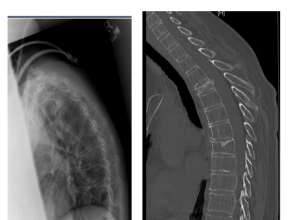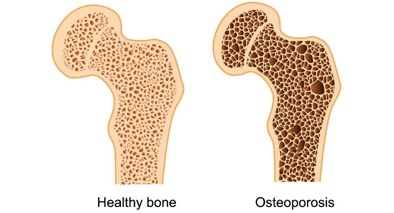Bones strength increases to age 35, remains steady for mid-adulthood, then declines by 1-2% per annum but precipitously around menopause when bone loss can be 5% per annum for 4-5 years perimenopausal.
Activities, lifestyle, genetics and medical conditions can also impact bone strength.
Osteoporosis happens when bones become gradually more fragile. This can progress painlessly until a bone suddenly breaks. Our bones comprise a thick outer shell surrounding a robust mesh network filled with calcium salts, collagen (protein), and other essential minerals. When the mesh becomes thin, it can break easily.
In the body, bones are constantly in a state of renewal. Old bone breaks down, and new bone is made. This happens more slowly in old age. In young people, the body makes new bone faster than it breaks down the old bone, increasing bone mass.
Over time, this process slows down. We reach our peak bone mass level in our early 30s, and from then on, bones break down faster than the body can create them.
Therefore, the more you produce bone and accumulate bone mass in your younger years, the less likely you are to develop osteoporosis as you age. Think of your body like a bank, saving bone for later in life.
If you want to talk about bone health with one of our consultants, make an appointment.



One Comment